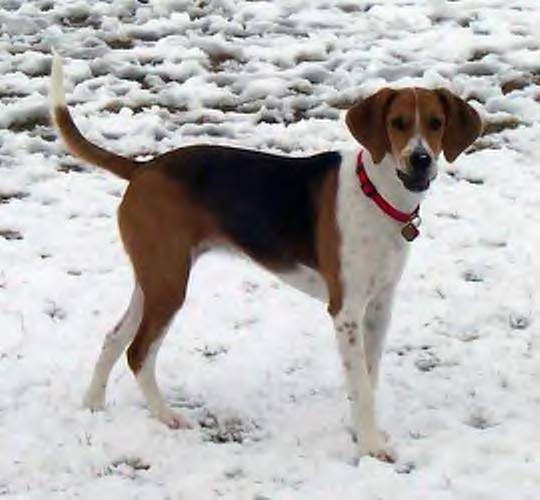
Harrier
Veterinarian Reviewed on December 22, 2007 by Dr. Janice Huntingford
Physical Characteristics
Breed Group:
The Harrier is a member of the Hound and Scenthound Group.
Weight:
40-60 lbs. (18-27 kg.)
Height:
19-21 Inches behind the withers.
Color(s):
Any color. Often lemon and white, red and white or white and tan.
Coat:
The Harrier sports a short, hard coat that is dense and glossy.
Overview
Character:
This hardy breed is self-willed and amiable. The Harrier is tolerant and wears a gentle expression.
Country of Origin:
Great Britain
History:
The Harrier may have originated in 13th-century England. Possible lineage includes the Talbot and St. Hubert Hounds, the Bracket and French Basset. Another possible link includes the English Foxhound, Fox Terrier and Greyhound. This breed trailed hares and foxes. The gentry kept Harrier packs and poorer hunters grouped their dogs to form scratch packs. This breed can chase with mounted hunters.
Name:
Harier is Norman for dog or hound.
Temperament:
This outgoing breed is outgoing and likes to clown around with human company. Originally bred as a working pack dog, the Harrier works well with other hounds.
Care:
Training:
Early and consistent training will benefit. Because of its instincts, the Harrier can wander away and follow a scent. Owners may try to call their pet back to no avail.
Activity:
Provide daily exercise in a fenced area secured both at the top and bottom. Never leave the Harrier alone for long periods. This dog is happiest with another canine playmate. This breed has watchdog ability. Respect its instinct to hunt, sniff and trail. Take the dog jogging, hiking and biking. Play games.
Ownership:
Owners must be prepared to exercise and supervise their dog. Keep the Harrier on a leash. Play with the dog in a safe enclosed area outdoors or it may wander away. A country home on acreage is most suitable. This breed is very good with children and friendly with dogs and strangers. This dog likes to sit on one’s lap and follow the family to bed. This dog loves to eat and may convince owners to keep feeding more than is wise. Teach the dog early not to touch food on the table or on the counter. As some Harriers like to dig, be prepared to face a rearranged yard. Be aware of the breed’s hunting instincts and the possible dangers: cars, other dogs, poison, rat bait.
Breeders:
No breeders listed at this time.
Sign up for our newsletter and receive more articles and the latest pet health updates and special offers.
Our Expert
 Dr. Janice Huntingford
Dr. Janice HuntingfordJanice Huntingford, DVM, has been in veterinary practice for over 30 years and has founded two veterinary clinics since receiving her Doctor of Veterinary Medicine at the Ontario Veterinary College, University of Guelph. She has studied extensively in both conventional and holistic modalities. Ask Dr. Jan

